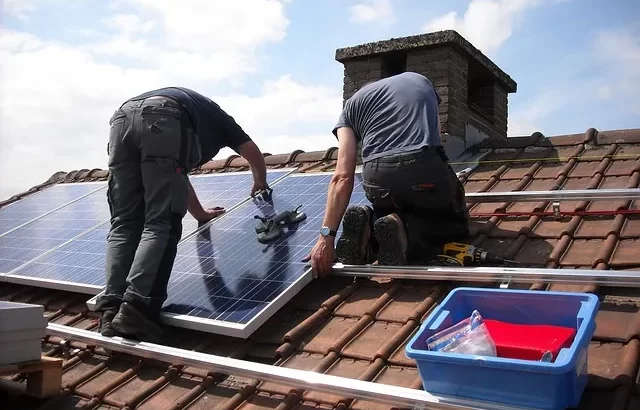Photovoltaic solar panels are increasingly popular as part of the energy transition. They are systems capable of capturing energy from the sun’s rays to convert them into electricity. However, knowing how a photovoltaic solar panel works is essential when using this technology. This article tells you
everything.
How does a photovoltaic solar panel work?
Solar energy is captured through modules covered with silicon cells. It is the main component of a photovoltaic solar panel . It transforms the energy of the sun into electricity. This is made possible by the photovoltaic cells that make up the module.
It should be noted that each cell is produced from a semiconductor material called silicon. Its behaviour is quite specific when exposed to solar radiation. Indeed, the light provided by the sun is composed of photons which will strike the surface of the photovoltaic solar panel. Then, they will transmit the energy they contain to the silicon’s electrons.
The electrons will then start moving to produce a direct electric current.
This process then makes it possible to add the quantities of electricity produced by the various photovoltaic solar panel cells. Furthermore, it is imperative to transform this direct electric current into an alternating current. This will allow it to be used in your home. It can also be sent to the electrical distribution network.
How to measure the efficiency of a photovoltaic solar panel?
The solar panel is traditionally installed on the roofs of buildings or houses. Its efficiency is the ratio between the energy that arrives at the panel and that which comes out of it in the form of electricity. It should be noted that obtaining very different electrical production results with the same photovoltaic panel is possible.
There can indeed be different losses during the transformation of solar energy into electricity. Thus, many elements must be considered to calculate the quantity of solar energy which will indeed be converted into electrical energy. It is :
-The power of the panel: a photovoltaic solar panel is often defined by its peak power (in watt-peak or Wc);
-The area where the photovoltaic panel is located: the quantity and quality of solar radiation will condition the production of electricity;
-The technology used to manufacture the solar panel: generally, the performance of specific technologies is lower than others;
-The inclination and orientation of the panel: a southern orientation with a tip of 30° and 35° is, for example, the best possible installation. The other positions induce more or less significant losses.
You should also note the other equipment in your installation. Inverters or cables can indeed induce certain energy losses. There are also potential shadows. A shadow falling on your installation can reduce its performance.
How to install a photovoltaic solar panel?
It is interesting to install a photovoltaic solar panel on your roof. The installation varies according to the accessories in particular. The photovoltaic solar panel is equipped with a device called a fastening system. The installers ensure that there is a good seal with your roof.
Therefore, various precautions are necessary to install a solar panel on a house roof.
In addition, it is preferable to call on different craftsmen to be sure of making the right choice. They will make you various offers at different prices. So you will be able to make the best decision.
For simplicity, there are online forms to fill out to receive a quick and free estimate for your solar project. Solar experts will answer your questions and will be able to accompany you to launch your project.
In summary, the stages which make it possible to produce electricity with a photovoltaic solar panel are the photons which come to strike the photovoltaic cells. These electrons move by producing a direct current. This is then transformed into an alternating current thanks to the inverters.



















